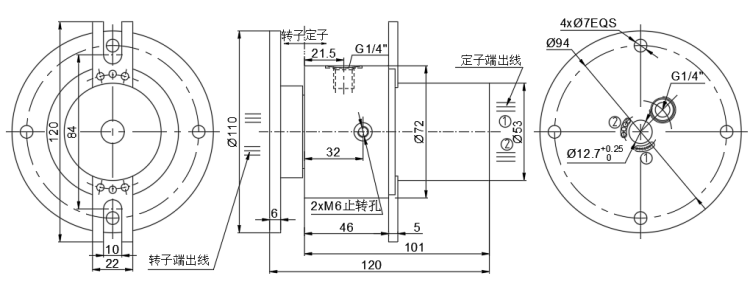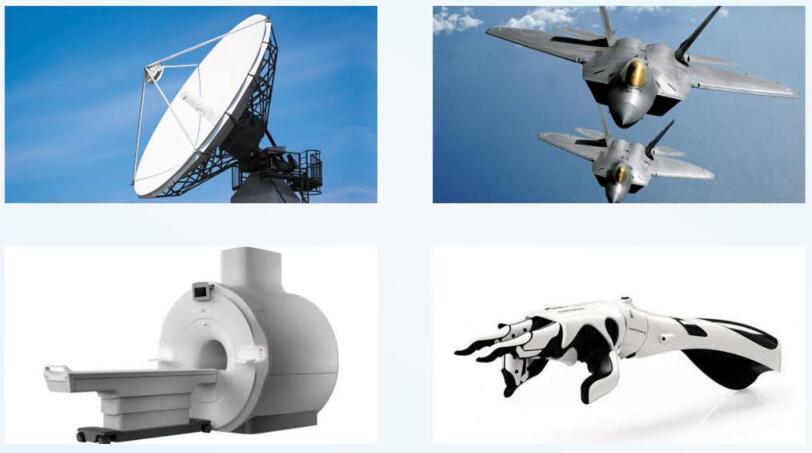Pneumatic liquid slip rings offer their users the following advantages:
- High load capacity
- Long service life
- Easy installation
- Reliable, sophisticated design
- Compact design
- Various applications
Pneumatic liquid slip rings offer their users the following advantages:
|
DHK012F-10-1Q |
|||
|
The main parameters |
|||
| Number of circuits | 10 | Working temperature | “-40℃~+65℃” |
| Rated current | 2A.5A.10A.15A.20A | Working humidity | <70% |
| Rated voltage | 0~240 VAC/VDC | Protection level | IP54 |
| Insulation resistance | ≥1000MΩ @500VDC | Housing material | Aluminum Alloy |
| Insulation strength | 1500 VAC@50Hz,60s,2mA | Electrical contact material | Precious metal |
| Dynamic resistance variation | <10MΩ | Lead wire specification | Colored Teflon insulated & tinned stranded flexible wire |
| Rotating speed | 0~600rpm | Lead wire length | 500mm + 20mm |

Pneumatic liquid slip rings belong to the “hybrid slip rings”. They are designed for the passage of more than one form of energy. The pneumatic liquid slip rings are among the most powerful representatives of their class. Their task is to guide any incoming energy form through a rotating union that can be rotated as desired – or vice versa. The return line from a rotating duct into a rigid duct is also possible without any problems.
The pneumatic liquid slip rings perform enormously, especially when passing through hydraulic or pneumatic pressures: the components can be pressurised with up to 100 bar. This makes them ideal for particularly demanding applications
The media guides of our pneumatic liquid slip rings are not exclusive. This means that we can pass both liquid and a pressurised gas in this series. This makes very interesting combinations possible. In addition to the transmission of pneumatic or hydraulic energy, this also allows auxiliary and operating materials, such as coolants, cleaning agents or lubricants, to pass through. The possible applications are thus practically unlimited.
However, these powerful slip rings are particularly popular for construction vehicles. Especially wheeled and tracked excavators with a rotating superstructure and hydraulic propulsion have at least one hydroelectric feed-through in the undercarriage. This allows the engine and hydraulic unit to be conveniently accommodated in the rotating superstructure and still reliably supply the rotating motors of the undercarriage with hydraulic pressure. Another application for these particularly powerful slip rings is in wind turbines. Here they are mainly used for hydraulic control of the rotor blade adjustment. They can transmit sensor data or luminous flux simultaneously with a hydraulic pressure that optimally turns the rotor blades into the wind.

Pneumatic+ liquid slip rings
DHK060-16-3Q gas-electric hybrid slip ring 3 pneumatic channels and 16 electrical channels
Pneumatic+ liquid slip rings
DHS065-28-1Q Gas electric slip ring 65mm with 1 gas channel 0.4Mpa and 28channels power signals